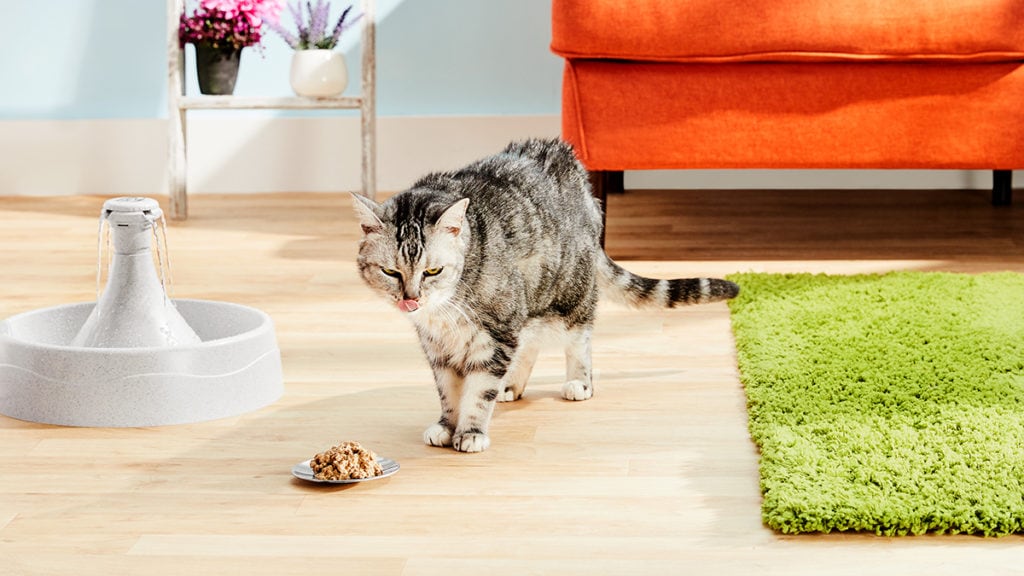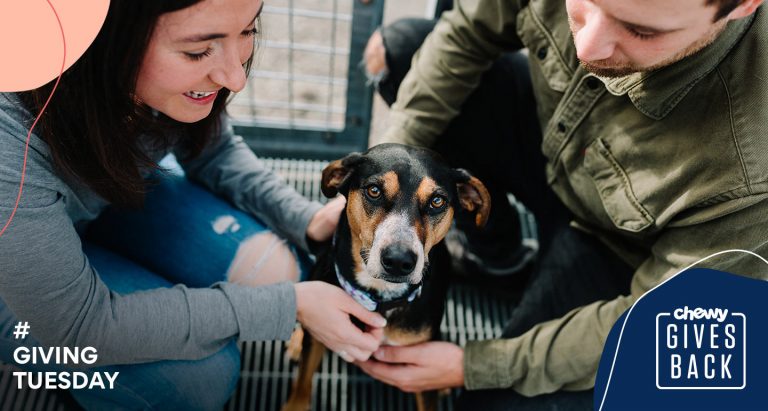If your feline friend is not getting enough water each day, they quickly can become a dehydrated cat. Especially now with warm weather settling in, you need to make sure their water is fresh and kept out of the sun and away from the heat.
If fresh, cool water still doesn’t entice them, you might need to be more proactive to get your cat drinking water. Here’s how you easily can tell if your cat is properly hydrated—and steps you can take if you suspect they're not.
What Are the Signs of a Dehydrated Cat?
There are common symptoms of dehydration in cats, says Julie Bank, CEO of the Pasadena Humane Society and SPCA in Pasadena, California. They are:
- Lethargy
- Listlessness
- Sunken eyes
- Dry and sticky gums
- Refusal to eat
- Decreased skin elasticity
“If you suspect your cat is dehydrated, it’s best to contact your veterinarian immediately,” Bank says. “Prolonged dehydration can lead to serious medical issues. Also, it’s important to realize that many of those symptoms of dehydration are also symptoms of other medical conditions.”
Your vet can tell the difference.
What You Can Do to Help a Dehydrated Cat
Once you’ve determined, or your vet has confirmed, that it’s cat dehydration, there are several steps you can take to rehydrate and maintain your kitty’s hydration.
Switch to Wet Cat Food
A first step in helping your dehydrated cat get the moisture they need is to switch them to a wet cat food, if they're not eating it already.
“Wet food diets are so much healthier for cats because their water intake is sufficient just by eating the food,” says Dr. Shian Simms, vice president of veterinary medicine at Bideawee, a pet welfare organization in New York City.
Made by Nacho Cuts In Gravy Recipes With Bone Broth was designed with cat hydration in mind. These recipes use flavored broth to entice your kitty to chow down while also providing them the moisture they need in their diet. Plus, they use high-quality ingredients like like cage-free chicken, sustainably sourced salmon, and grass fed and grain finished beef, and they're enriched with nutrients like taurine, DHA, prebiotics, Omega-3 and Omega-6 to support your cat's overall health.
For some cats, switching to wet food might not be enough. Cats with urinary issues often need even more water than regular wet cat food provides, Dr. Simms says.
“Adding water to canned food, to make it a bisque of sorts, is recommended,” she says.
If your cat refuses to eat wet food, Bank suggests adding water to their kibble or mixing wet food in with their dry diet.
Try Tasty Water
If your cat seems completely uninterested in drinking water from their cat bowl, even though it’s kept fresh and cool, it might be time to get creative. Wailani Sung, MS, Ph.D., DVM, DACVB, a staff veterinarian at the San Francisco SPCA, offers several innovative ideas to make water tastier to cats.
“I tell my clients to get a large can or carton of low-sodium or sodium-free chicken broth, and dilute it with three to five cups of water,” Dr. Sung says. “Then place it in ice cube trays and freeze it. Every day, take a cube out and leave it in a separate bowl, allowing the cat to lick at it throughout the day.”
Be sure to toss the mixture one hour after it’s completely melted so it doesn’t go bad.
A variation of this involves tuna and has worked with Dr. Sung’s own cat.
“I take a can of tuna packed in water, and toss it in the blender with at least five cups of water,” she says. “Then I freeze the mixture in ice cube trays.”
Both recipes can be adjusted to appeal to your cat’s taste, Dr. Sung says.
On hot summer days, Bank recommends tossing a small ice cube or two into the water dish.
“Your cat will be tempted to bat the ice around, and may drink while they're at it,” she says.
Switch Out Your Cat Water Bowl
Some cats refuse to drink standing water, no matter how clean or cool you make it. In this case, experts recommend providing a cat water fountain or waterfall-style water dispenser.
“Some cats are more likely to drink water when it’s presented in new and exciting ways,” Bank says.
Drinkwell makes several styles of cat water fountains, including the 360 Pet Fountain and the Pagoda Ceramic Cat Fountain.
Here are a few other options to use in lieu of a cat water bowl:
1. Give your cat drinking water in a cup, rather than bowl.
“My cat loves to drink water from my cup or glass,” Bank says, “so I always pour myself two glasses of water—one for him and one for me!”
2. Try something completely different.
Cat water bowls come in all sorts of shapes and sizes as well as of different materials, such as ceramic, glass, metal and plastic. You can even put the new bowl in a new location in your home. You never know what may appeal to your cat, Bank says.
3. Serve water from the tap.
“Sometimes we can train our cats to drink from the tap,” Dr. Sung says. “I have clients who turn on the faucet several times a day and allow their cats to drink their fill while the water is running. The same concept applies to cats who lick water off of shower walls or the bathtub edges!”
Dehydration in Kittens and Seniors
Young cats and elders are more prone to dehydration, Dr. Simms says, adding that “close monitoring of your cat’s drinking and bathroom habits are good practices.”
Necoichi’s Raised Cat Water Bowl is marked with measuring lines, so it’s easy to see how much your kitty is drinking.
Feeding your senior or kitten wet food (and eliminating dry food from their diet) helps, too, Dr. Simms says.
If kittens or senior cats aren’t eating, or they have diarrhea or are vomiting, they quickly can become dehydrated, so take them to a veterinarian as soon as possible.
Of particular note with senior cats is that “drinking excessively and frequent urination is an indicator of conditions such as kidney disease or diabetes,” Dr. Simms says.
If you notice your senior cat always seems to be thirsty, despite eating their wet food, a call to your vet is a good idea.
Share:












